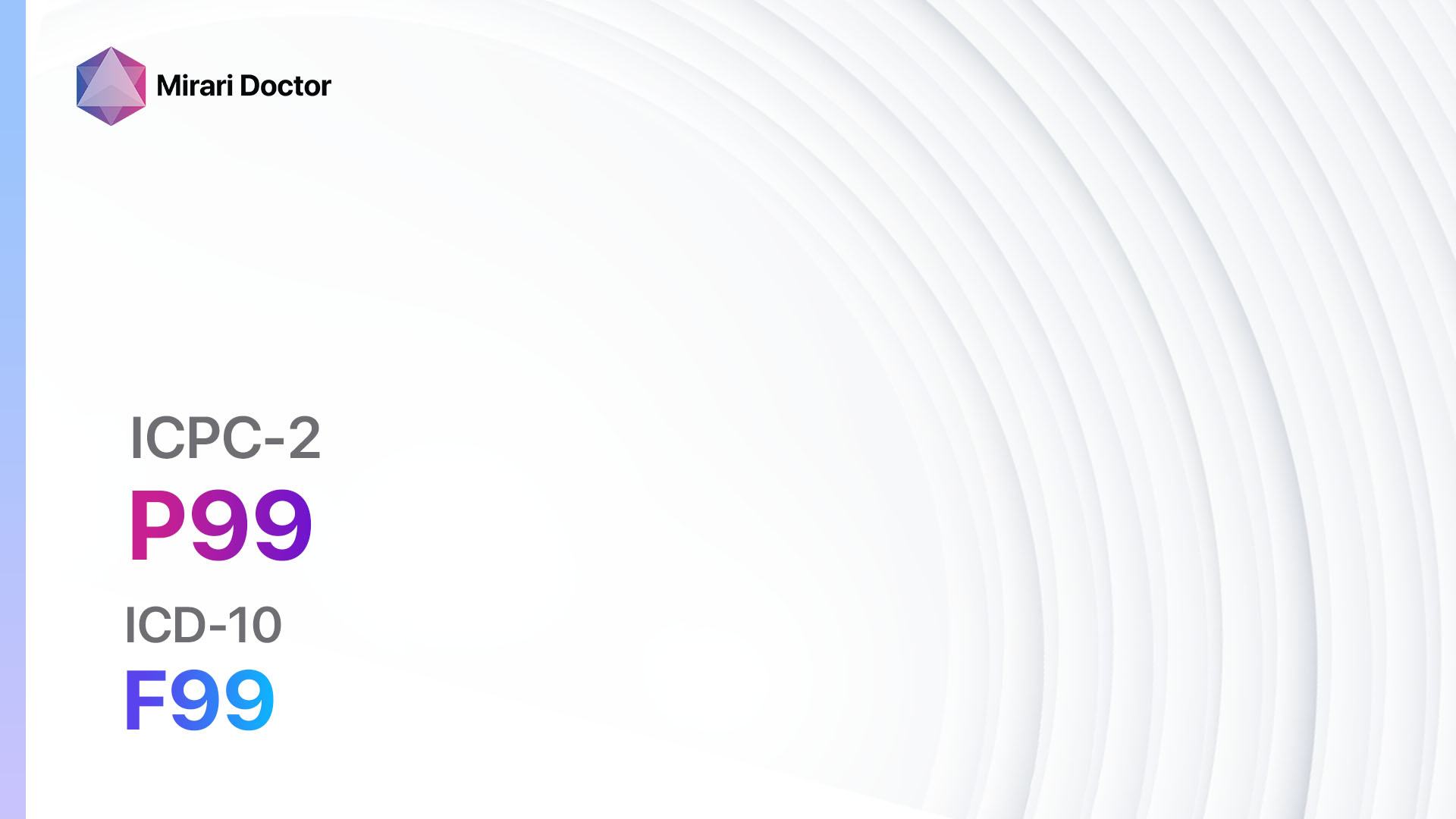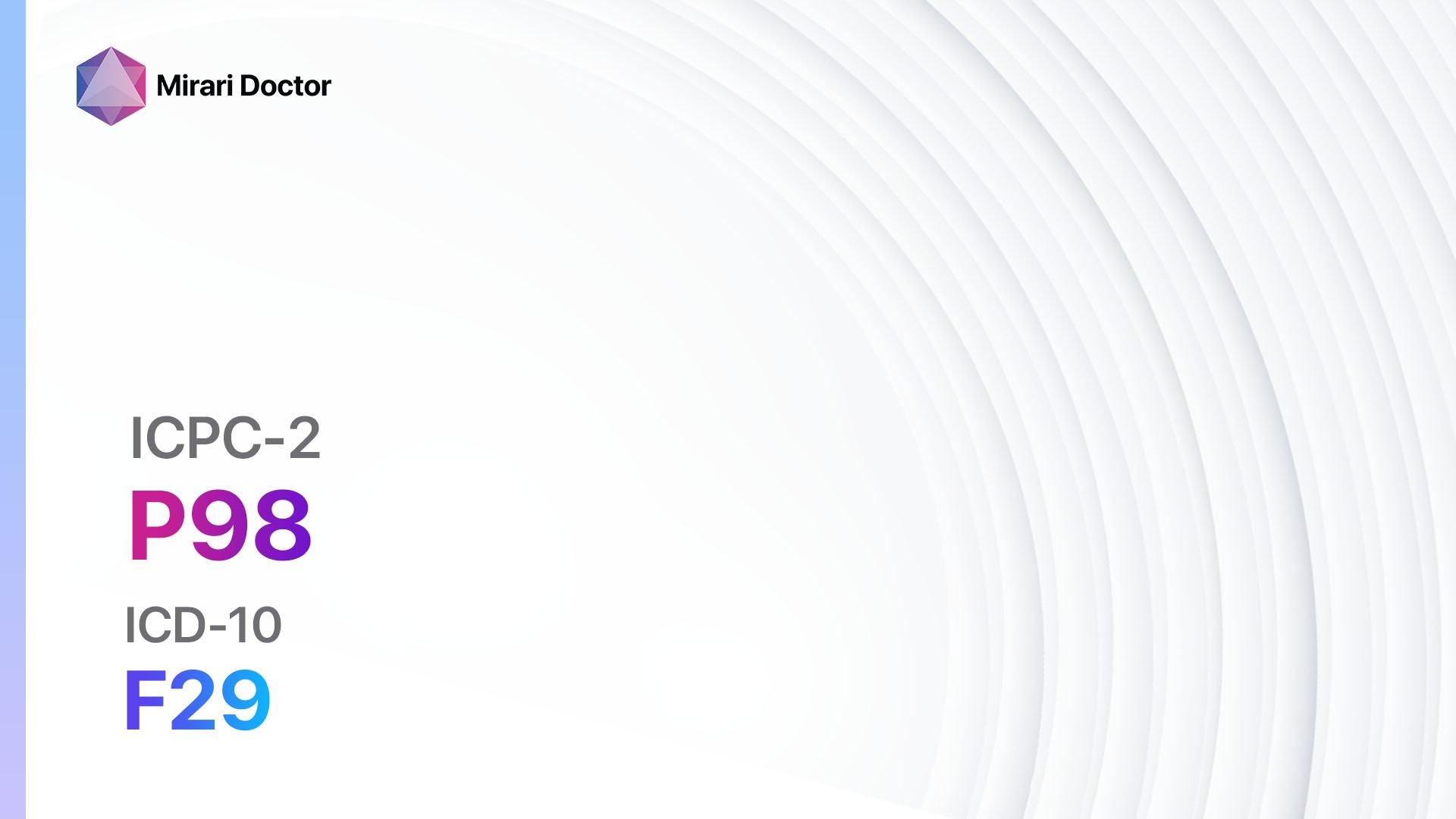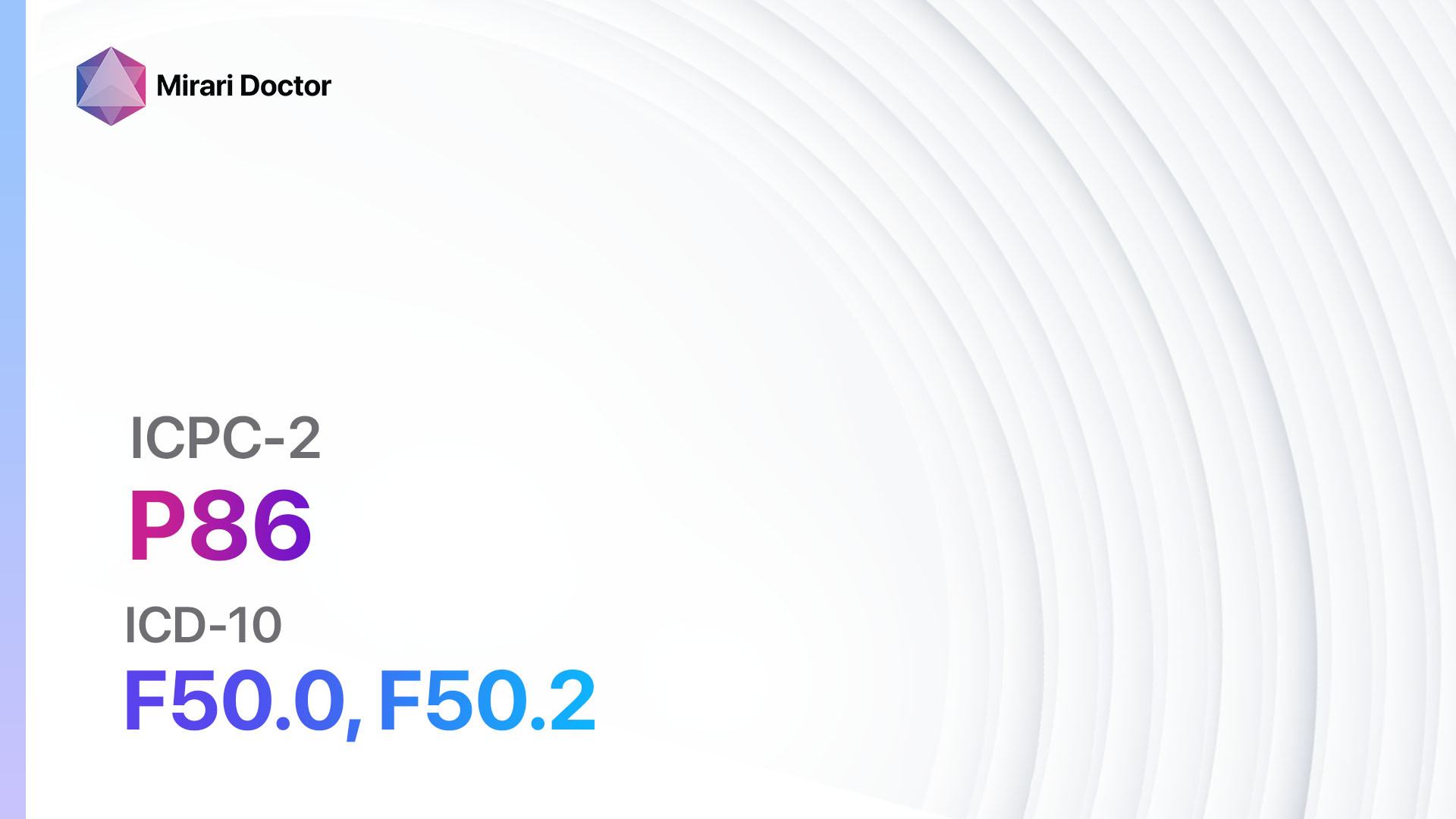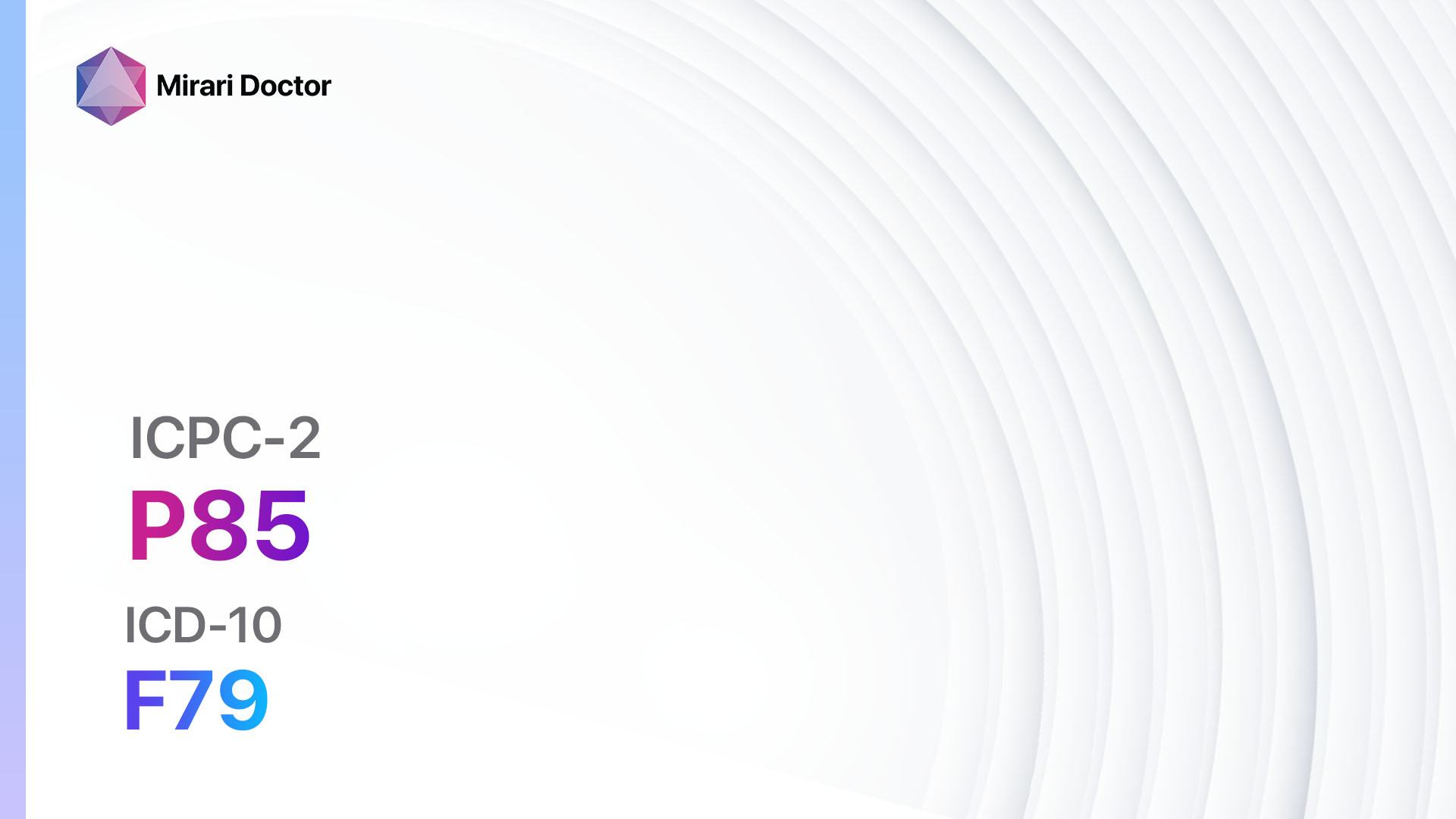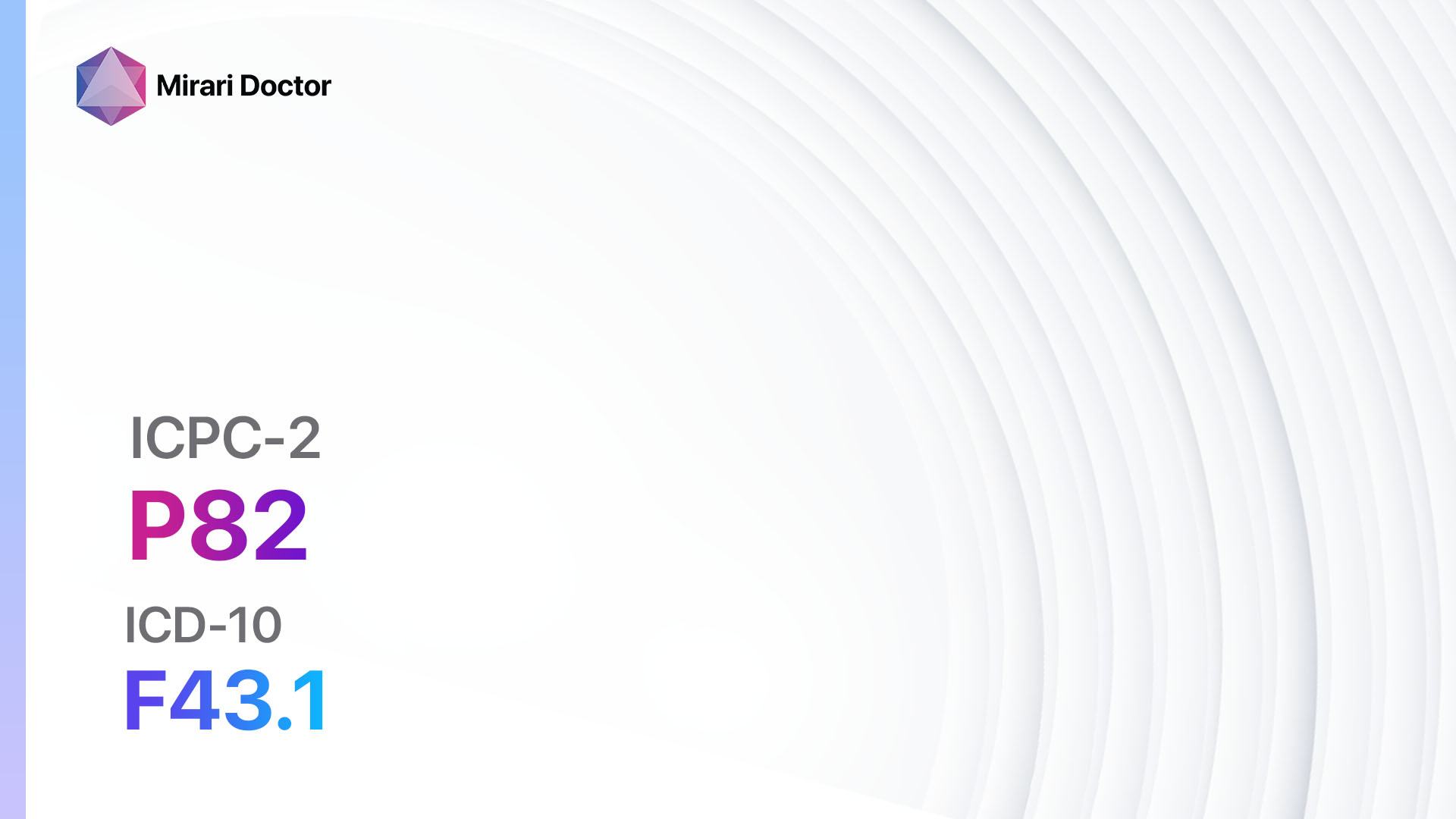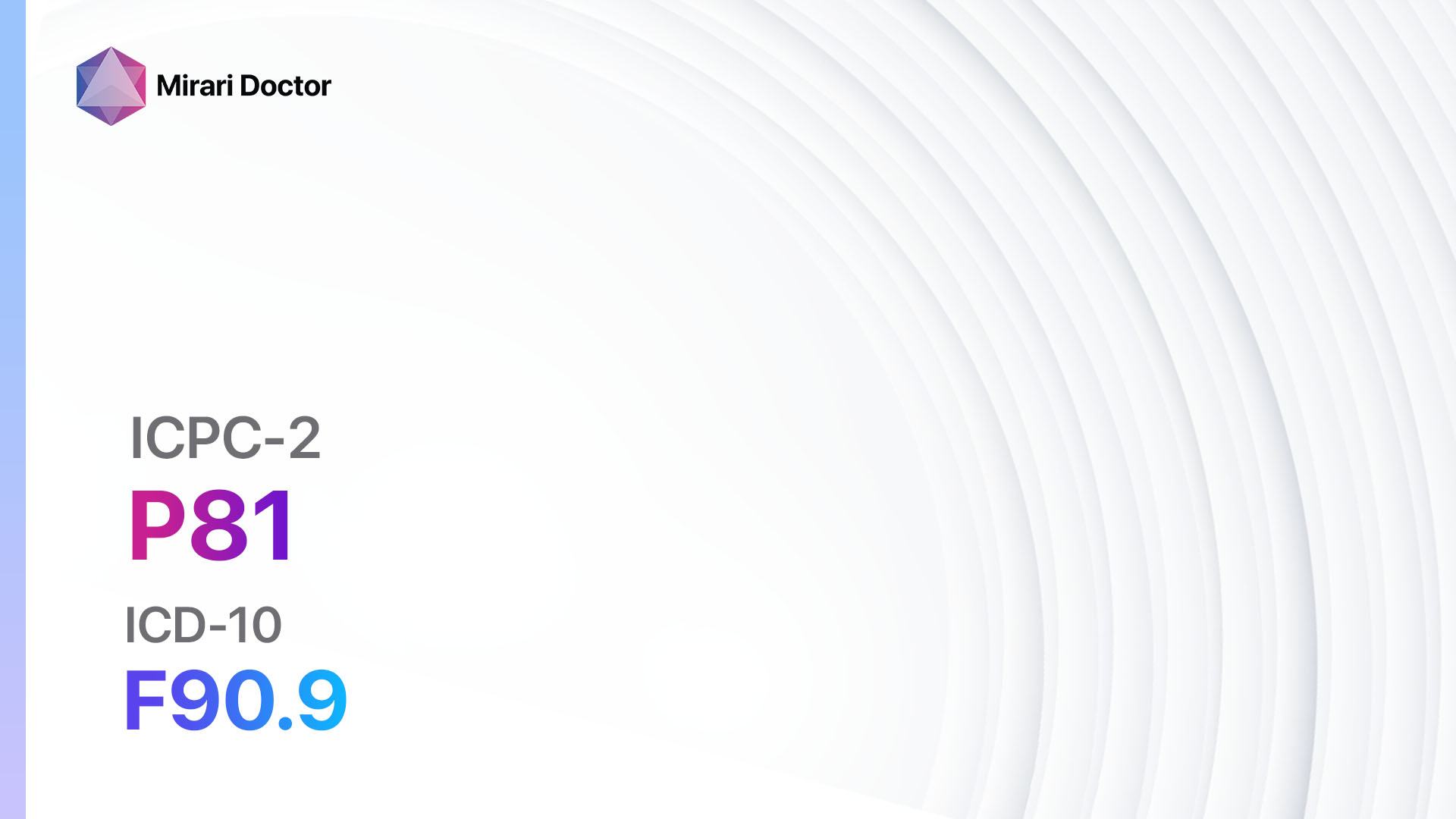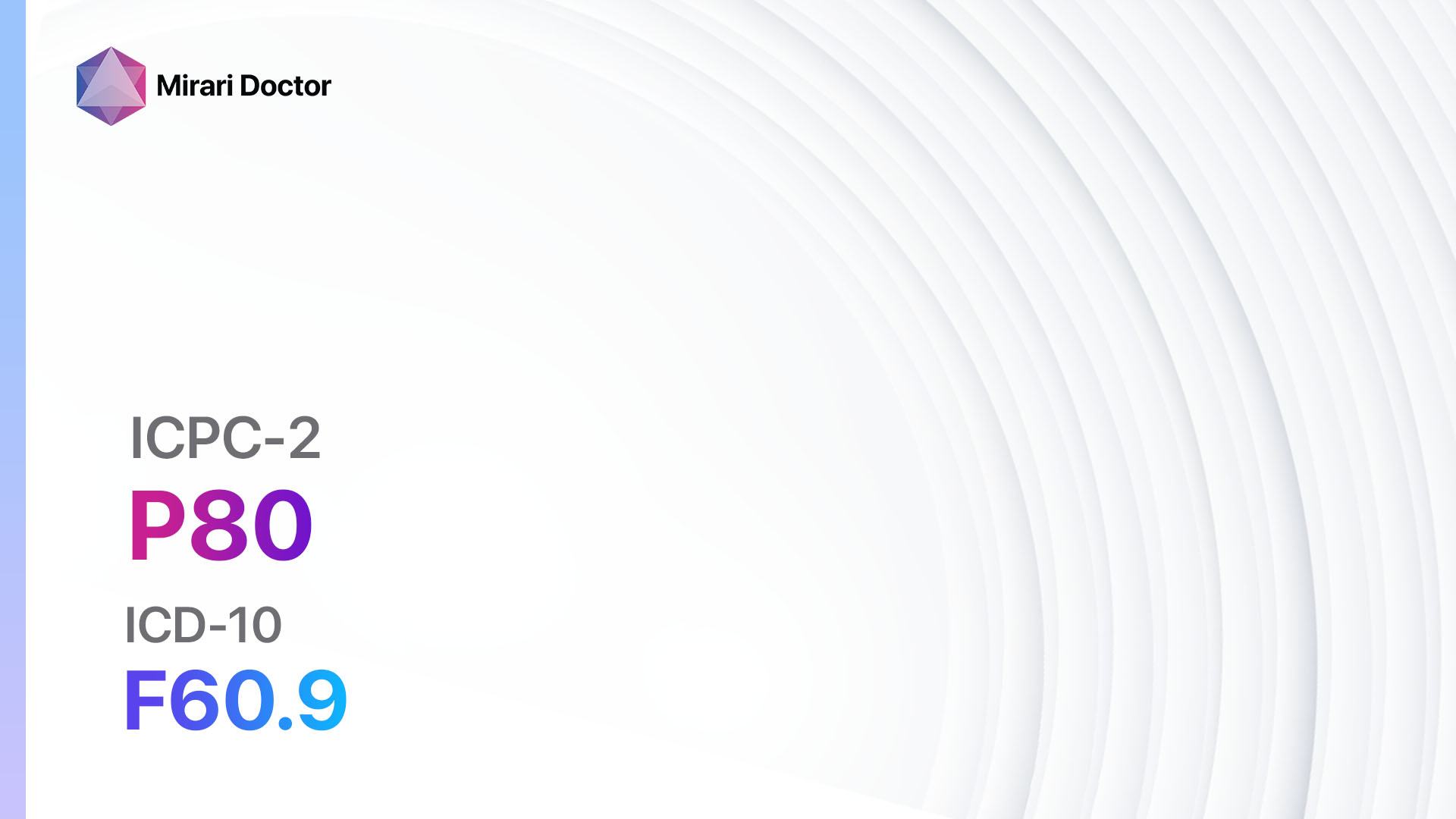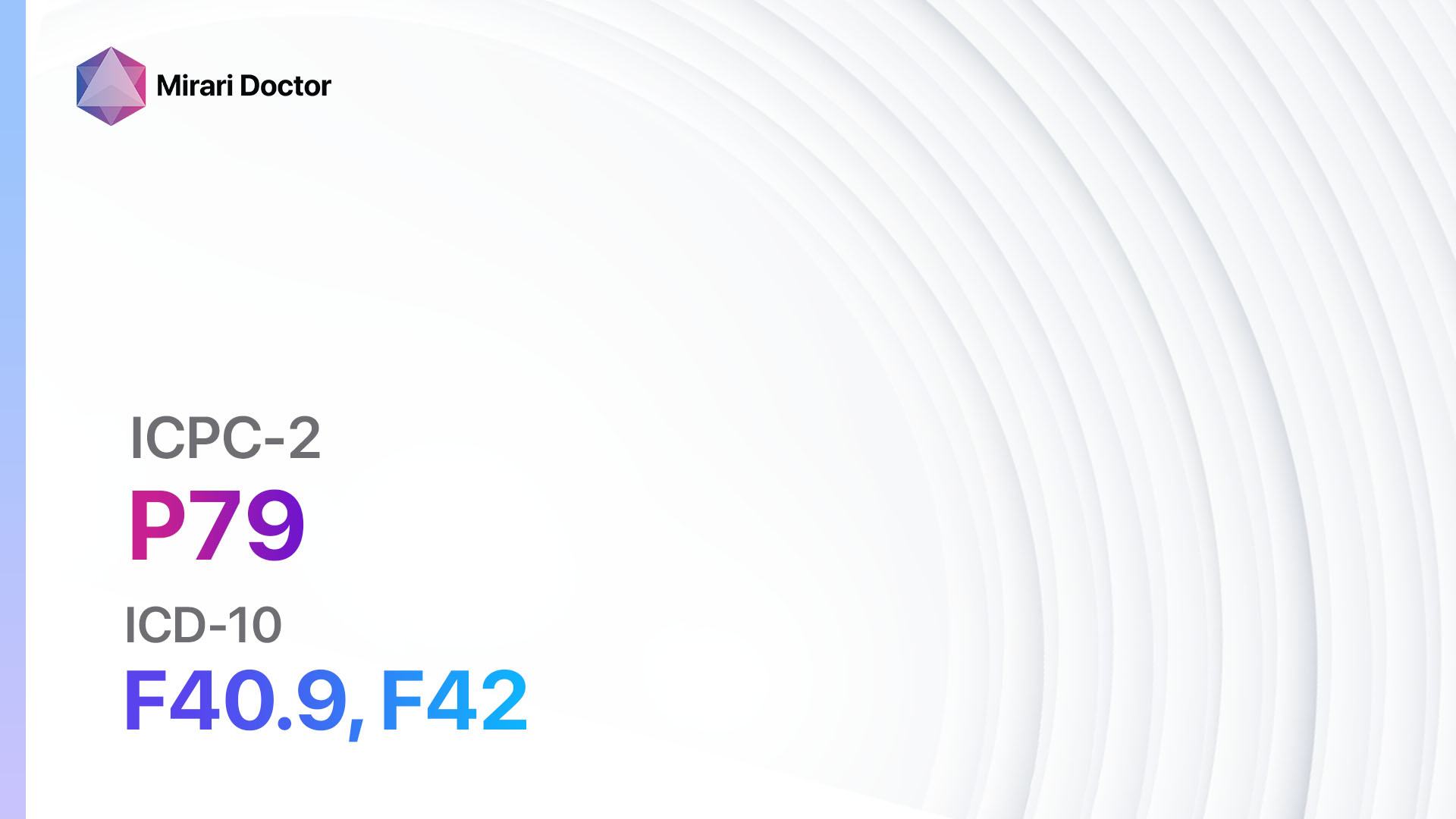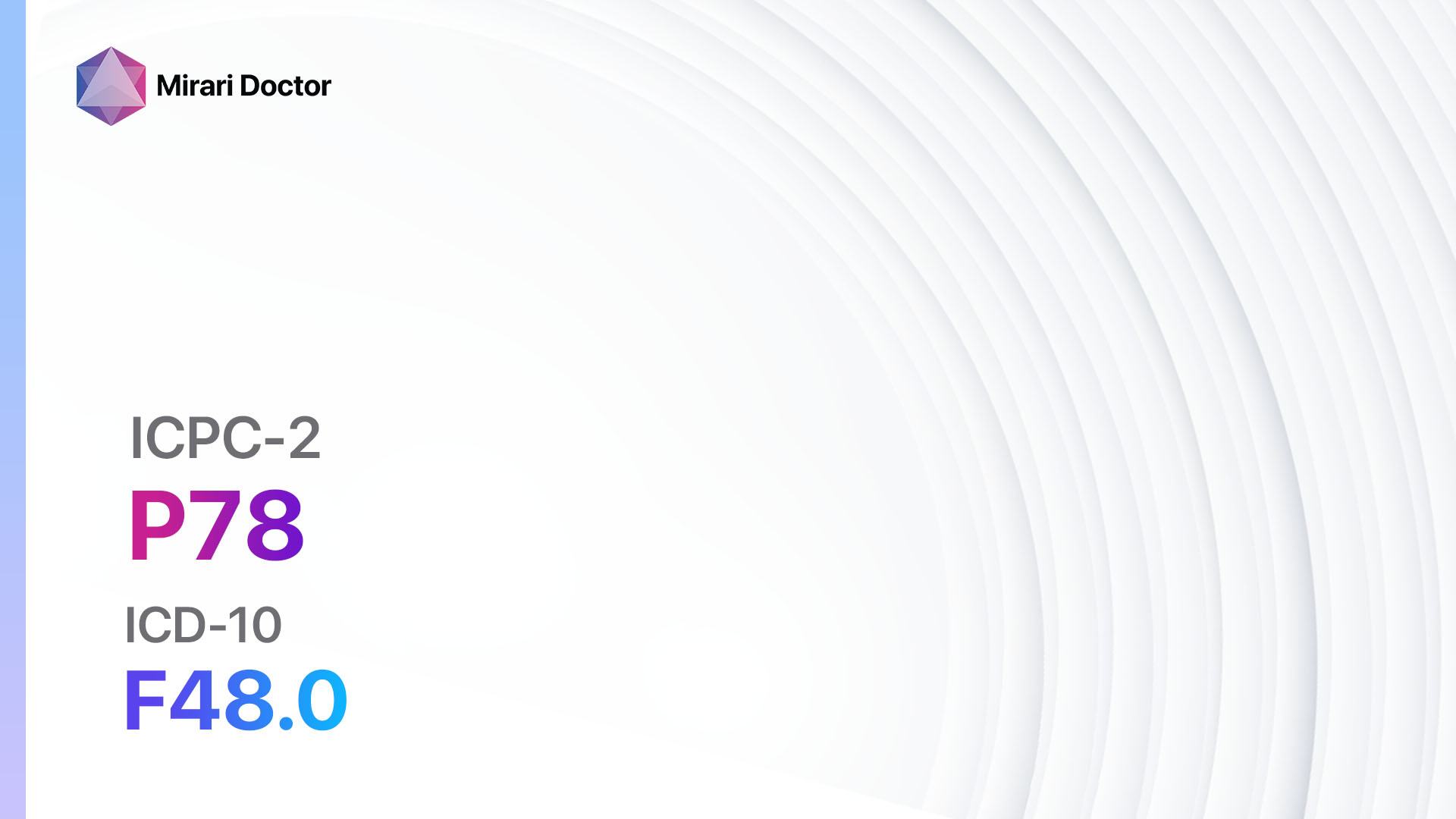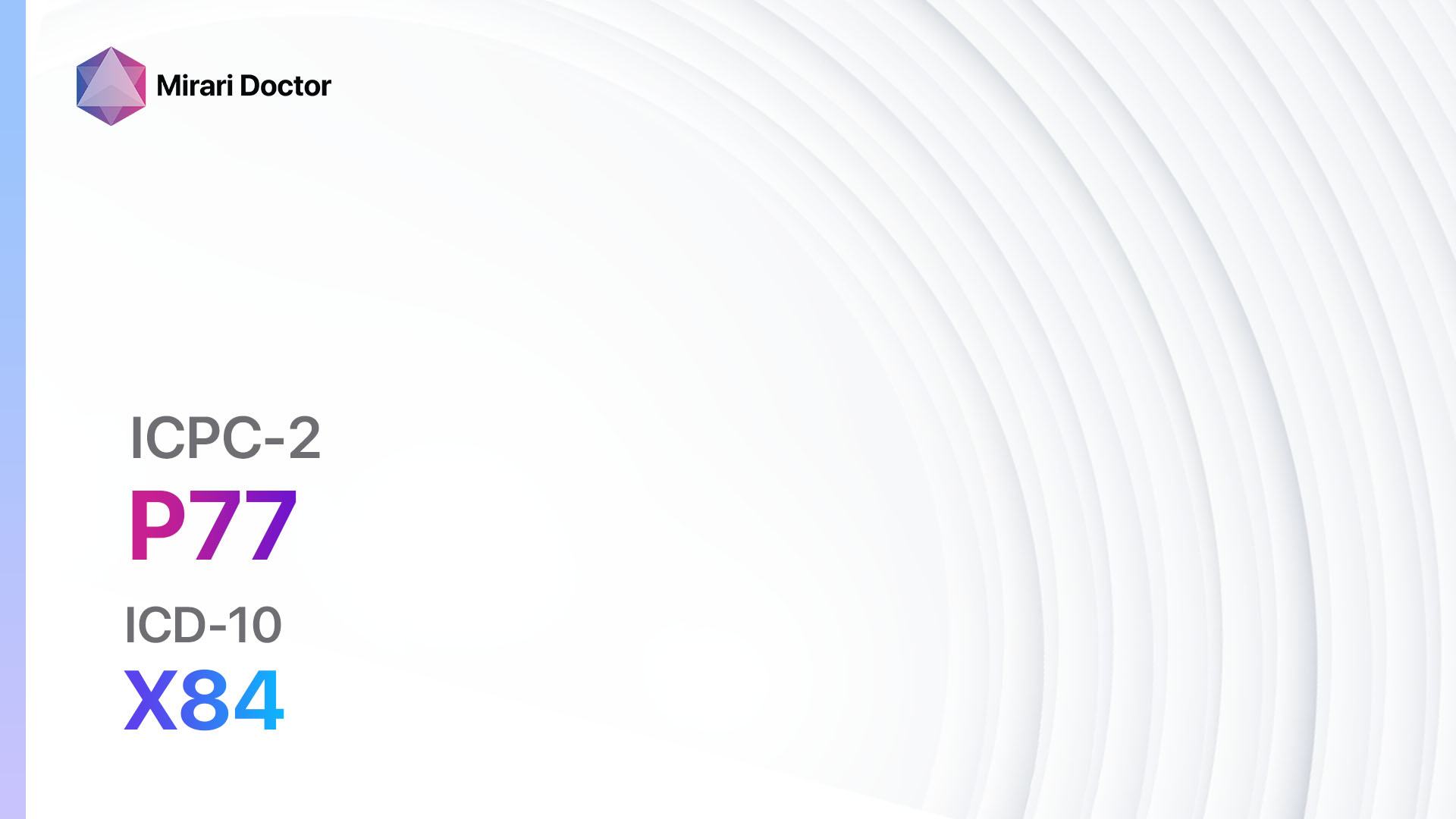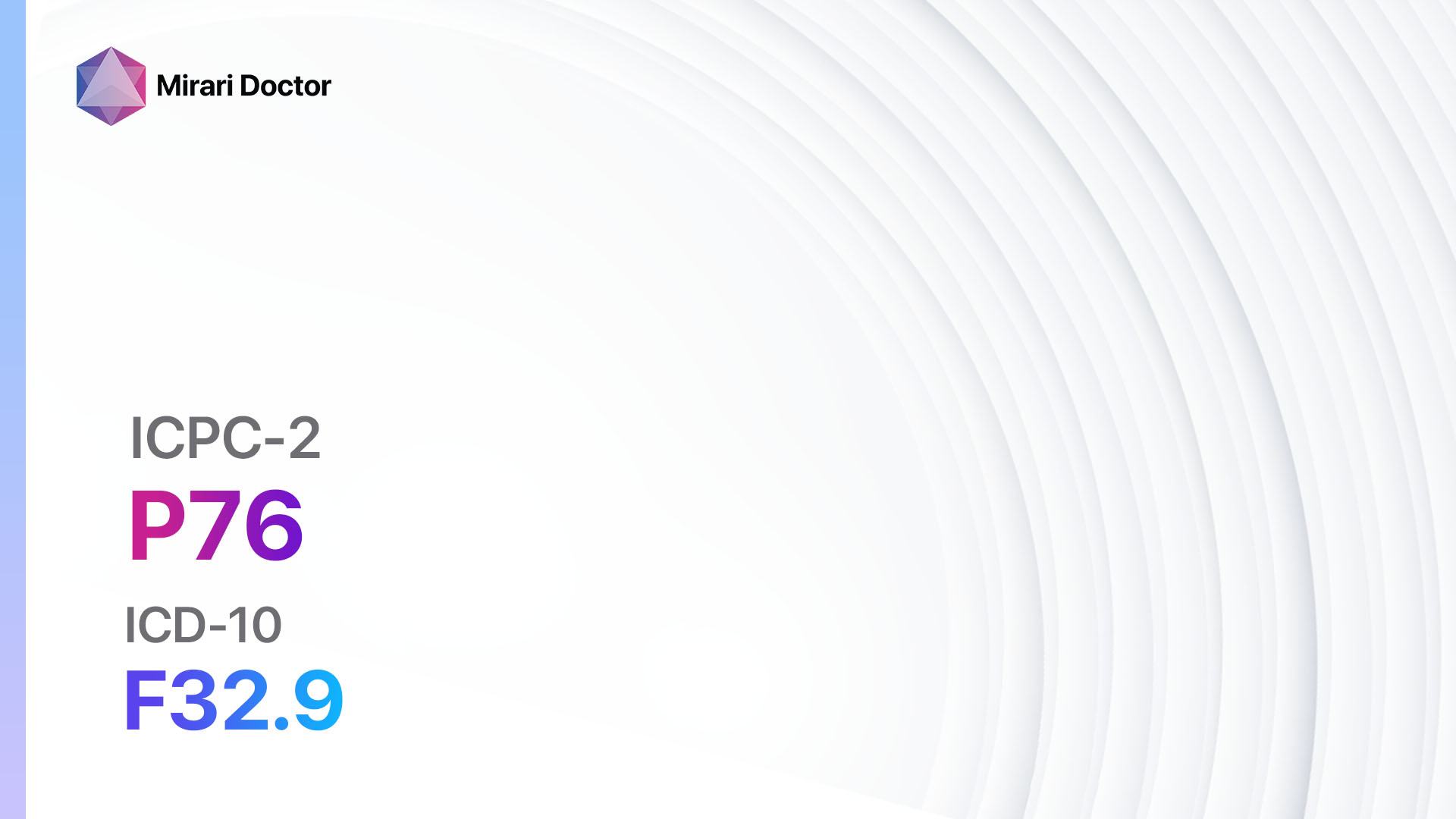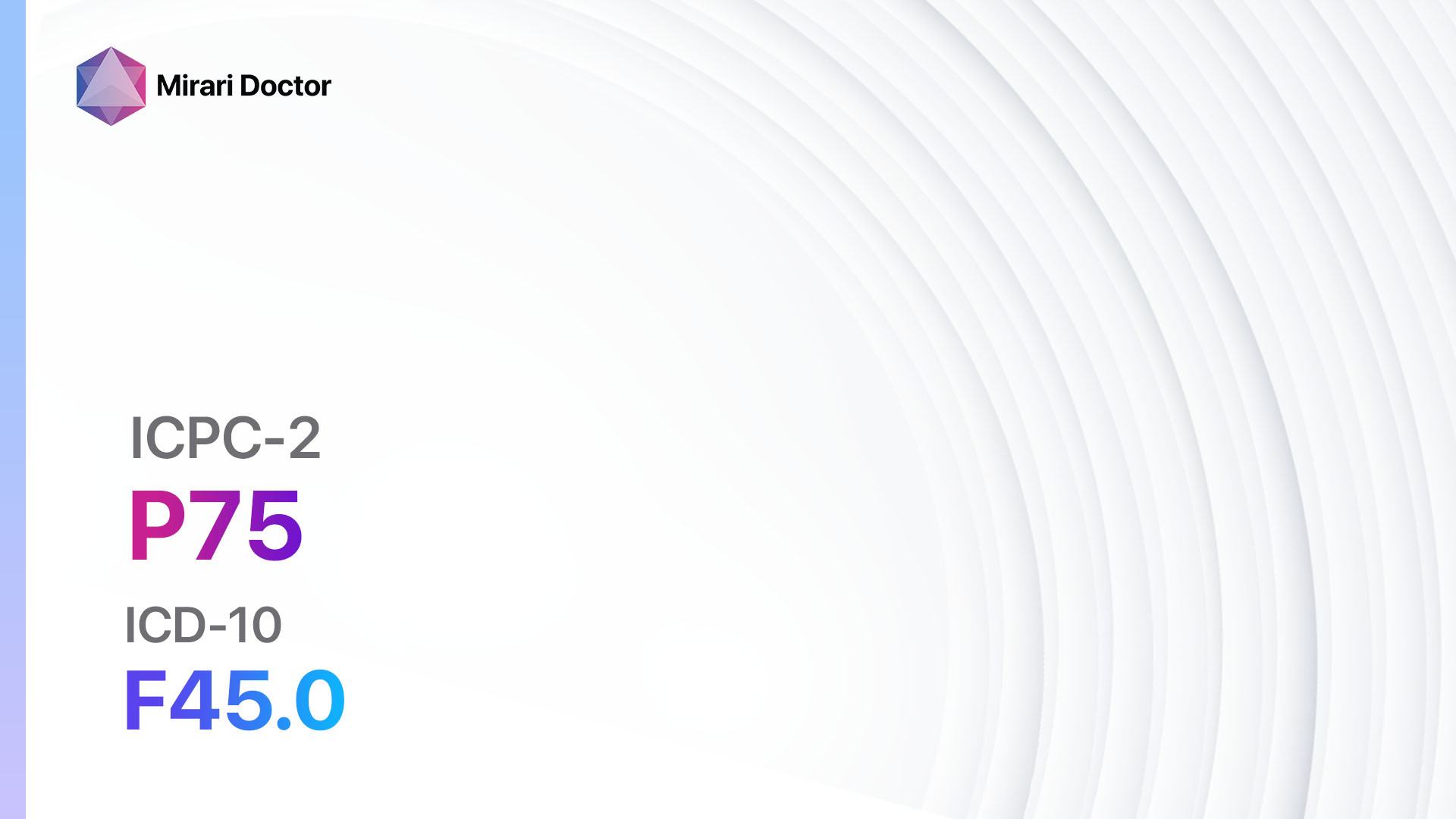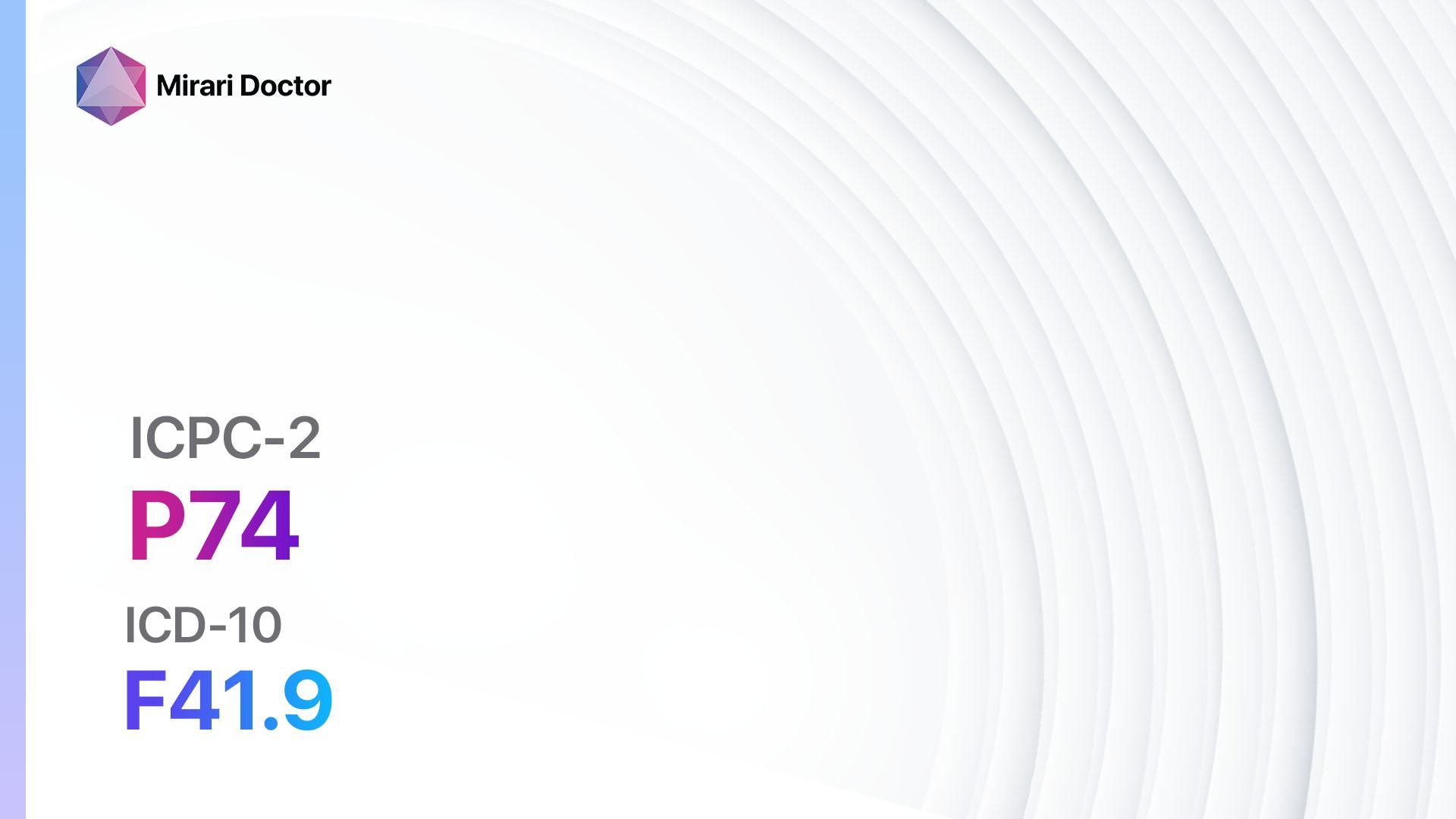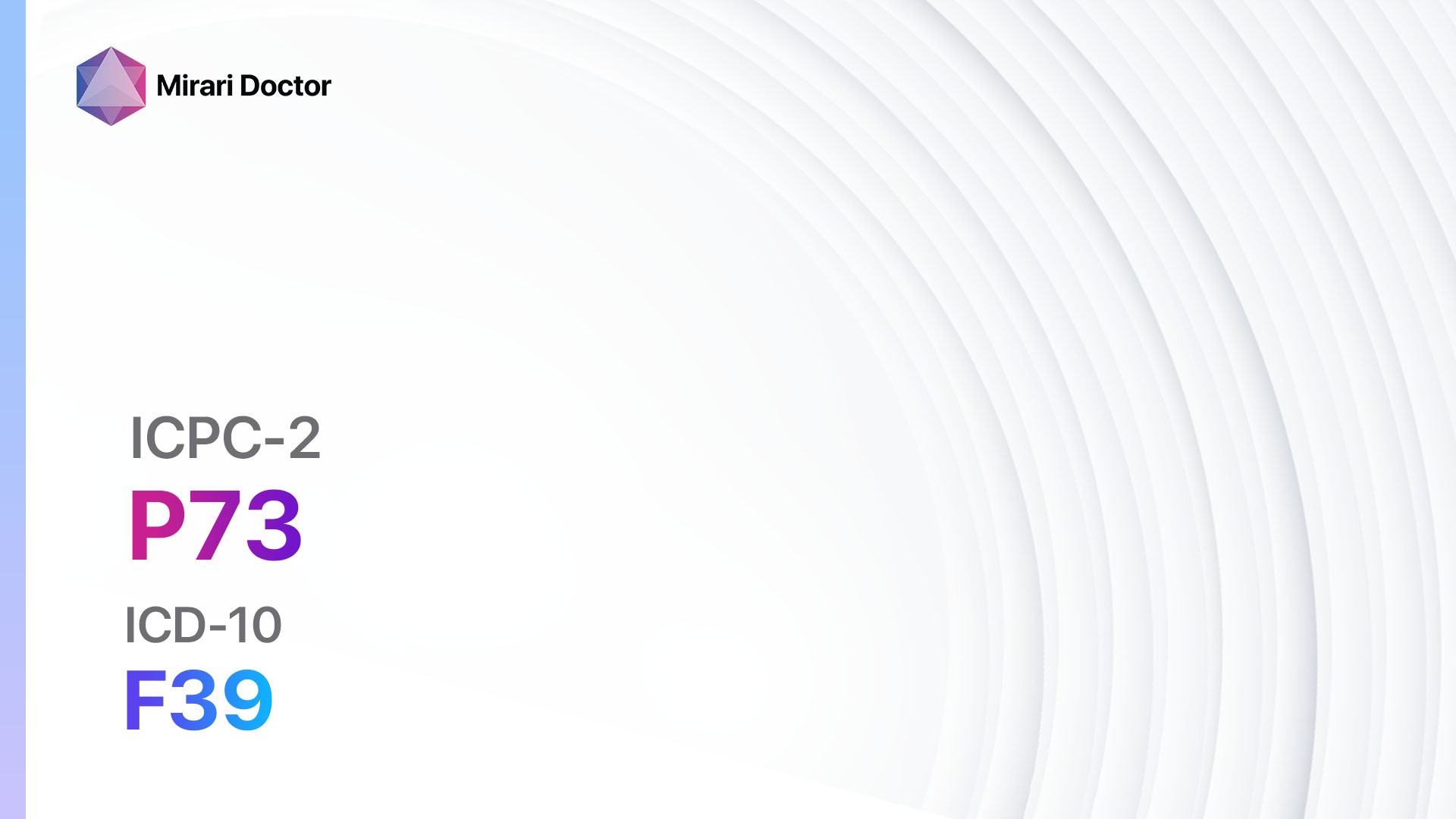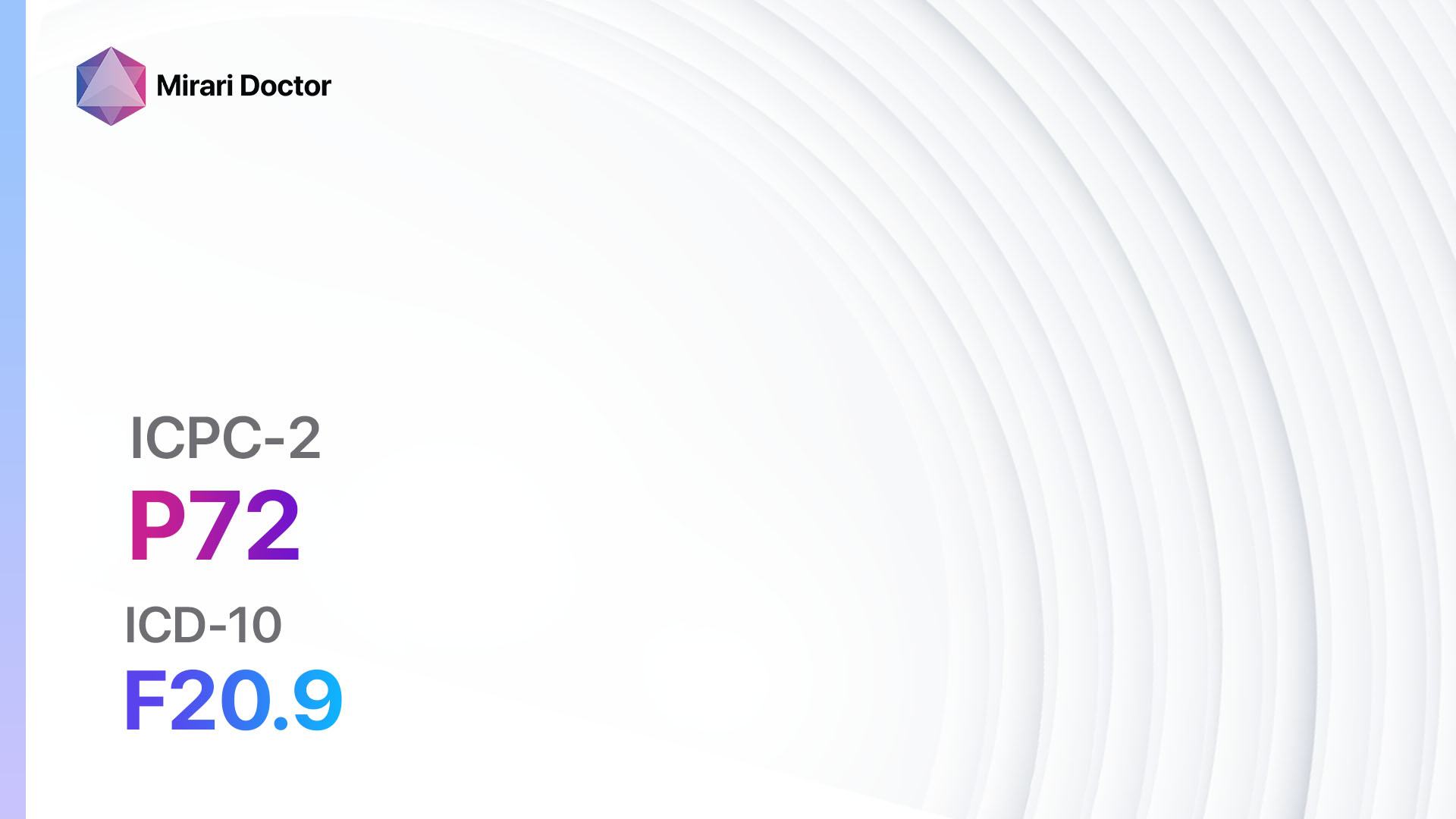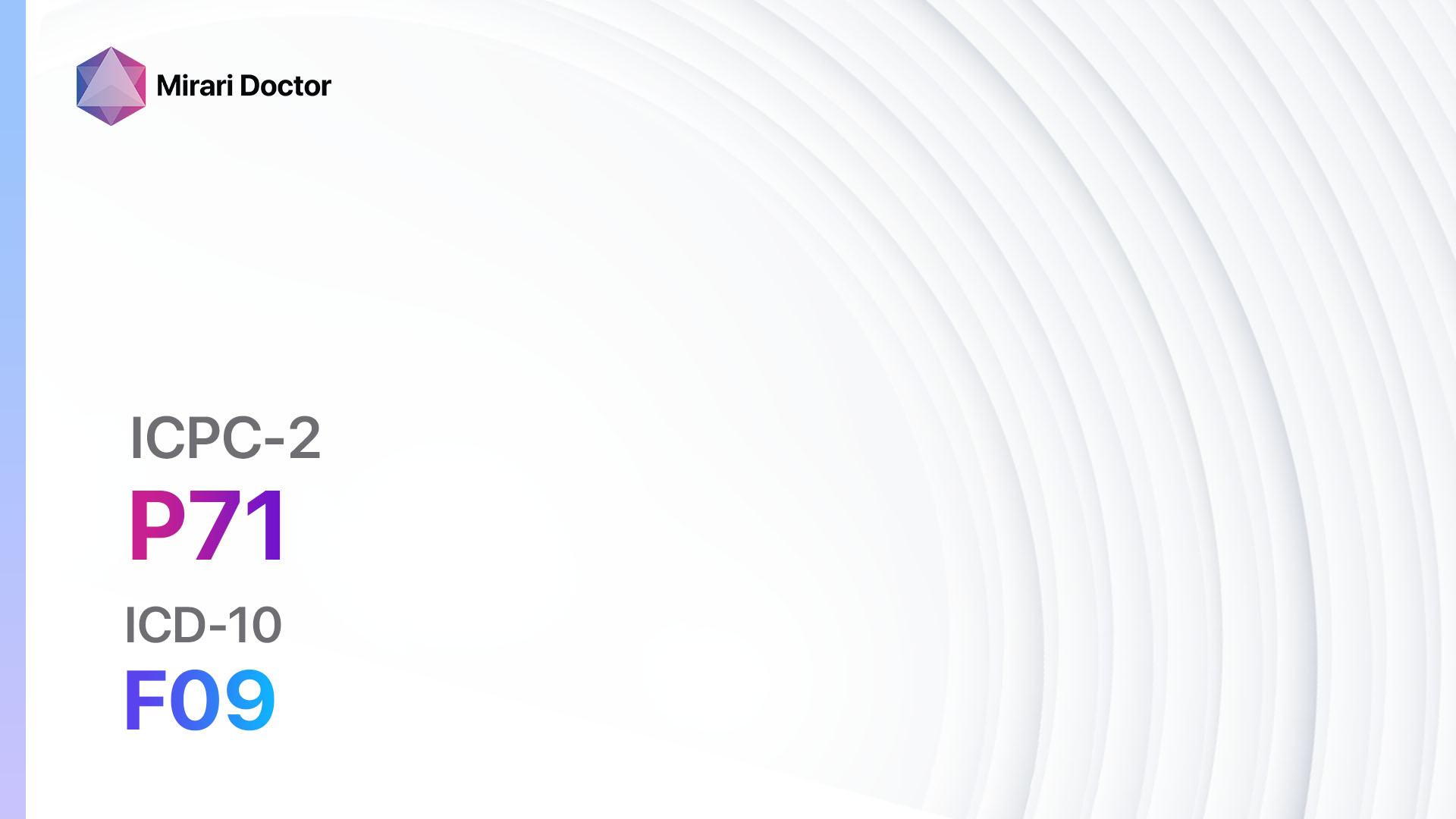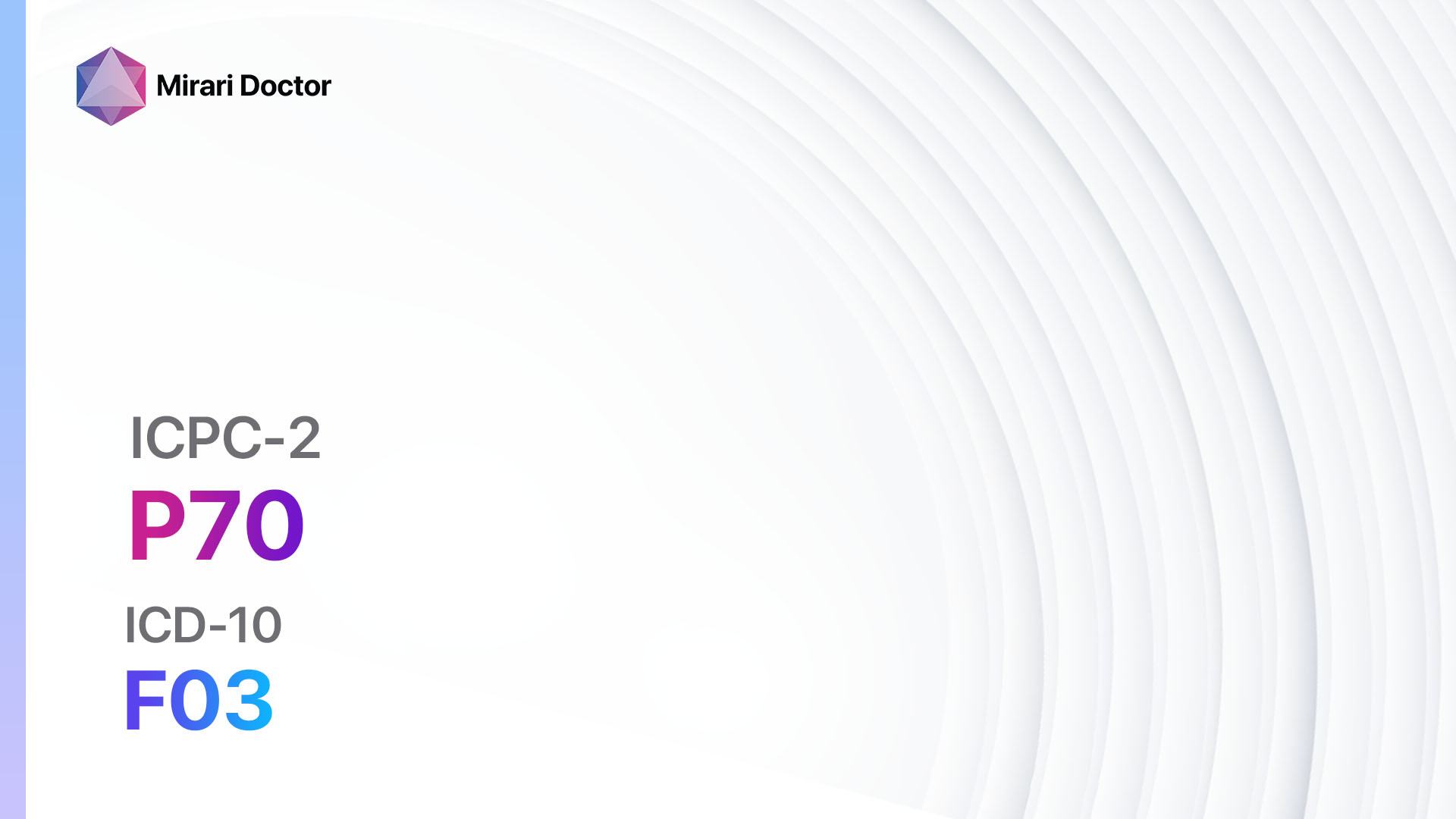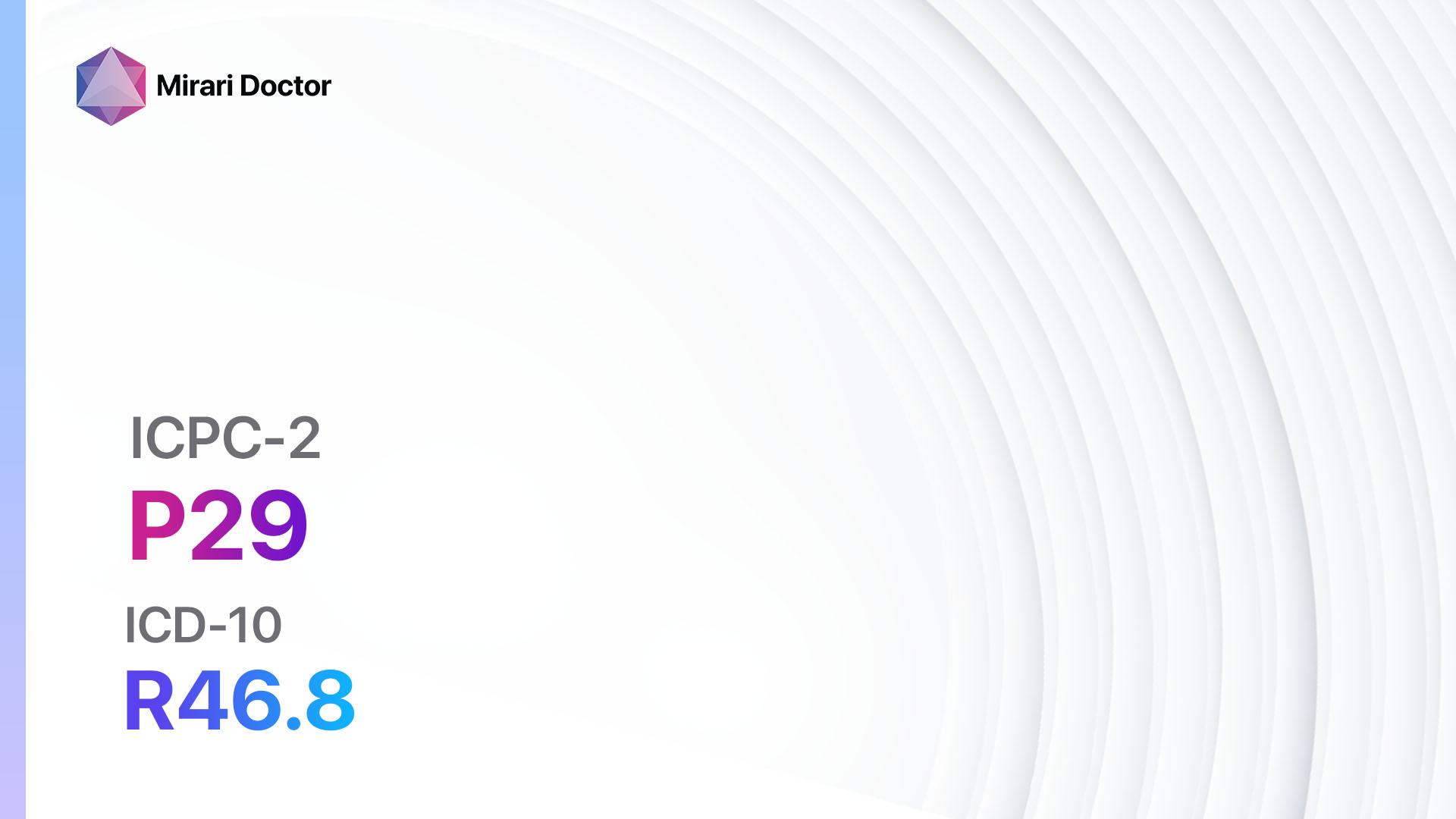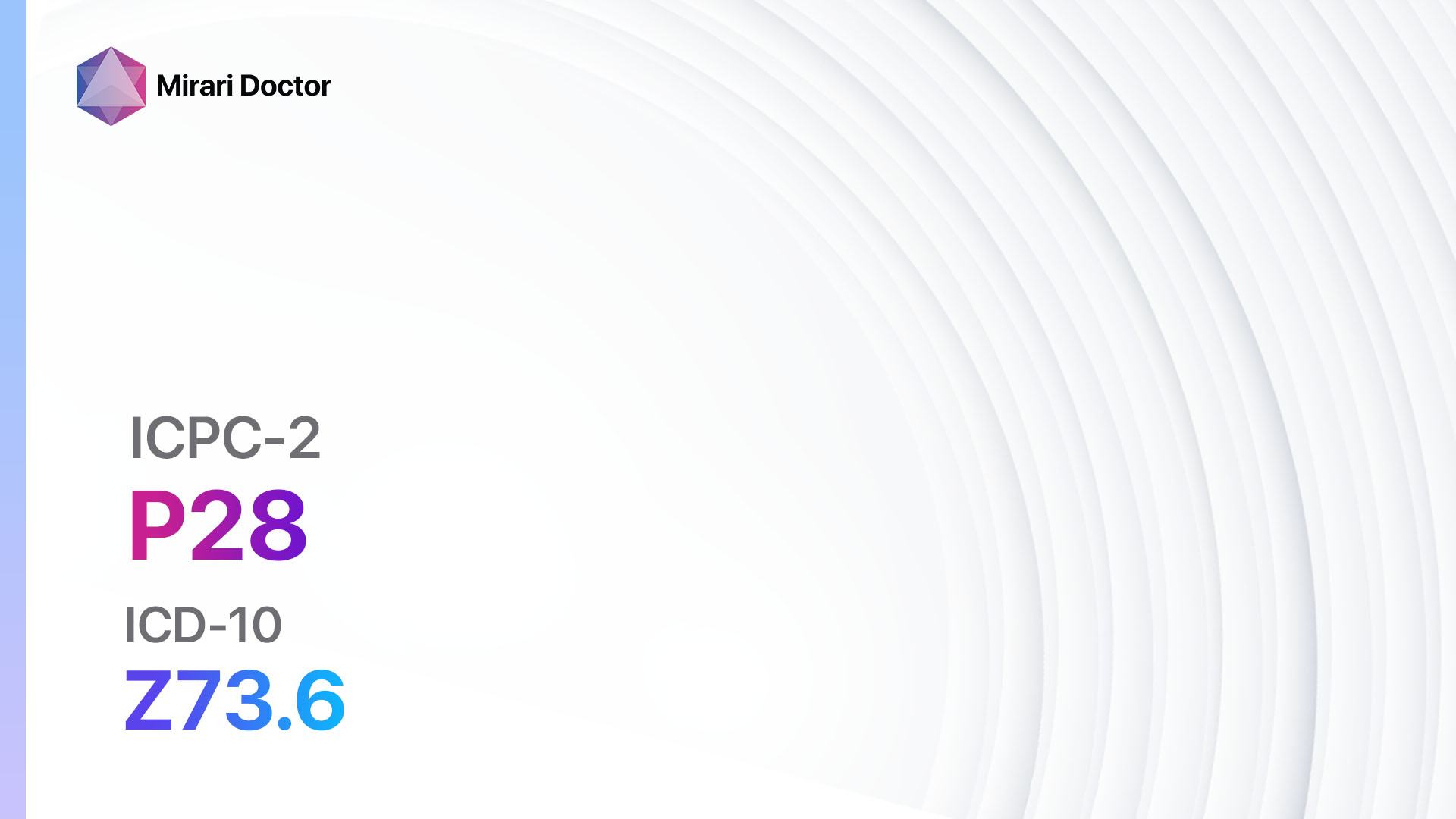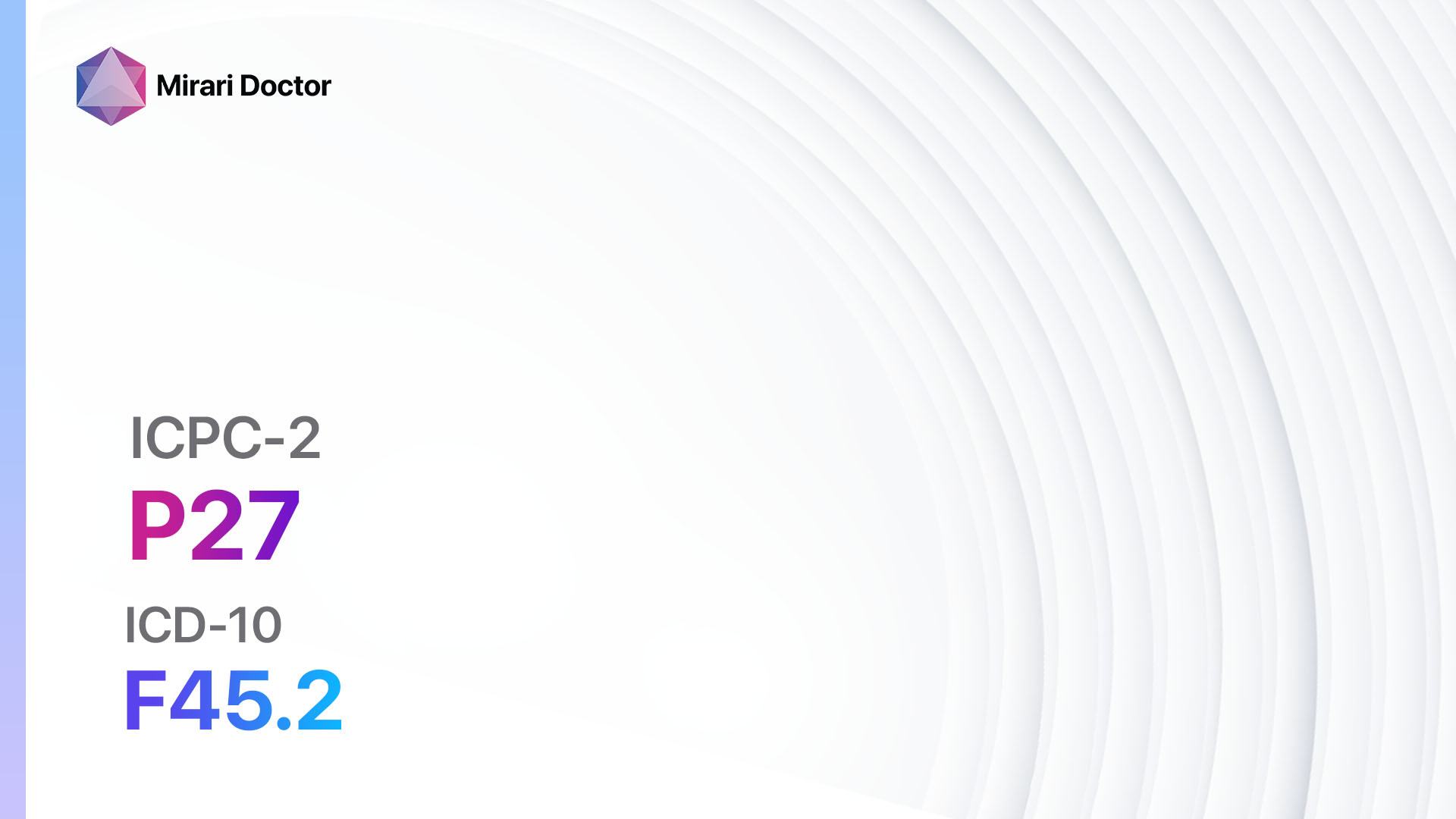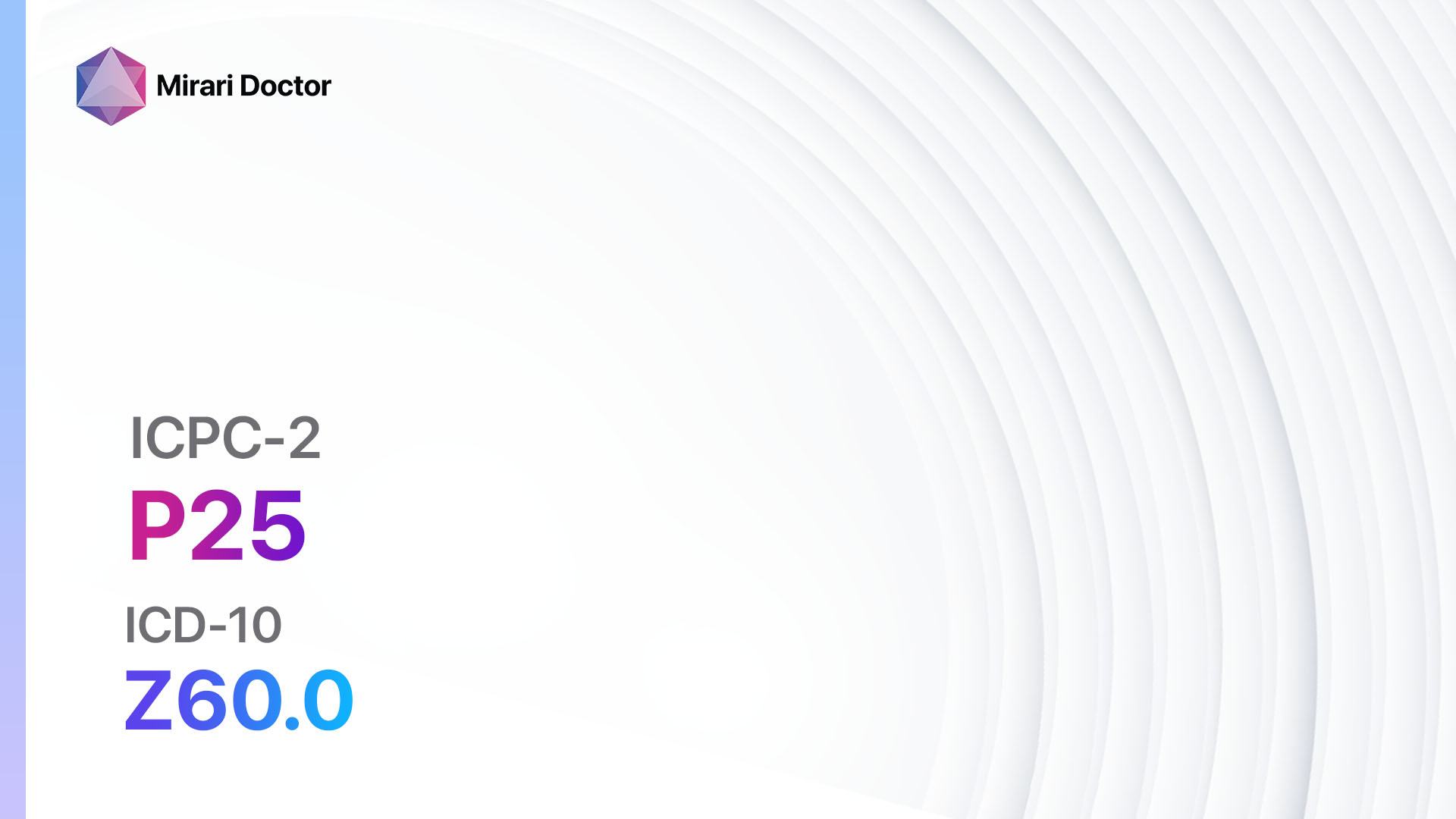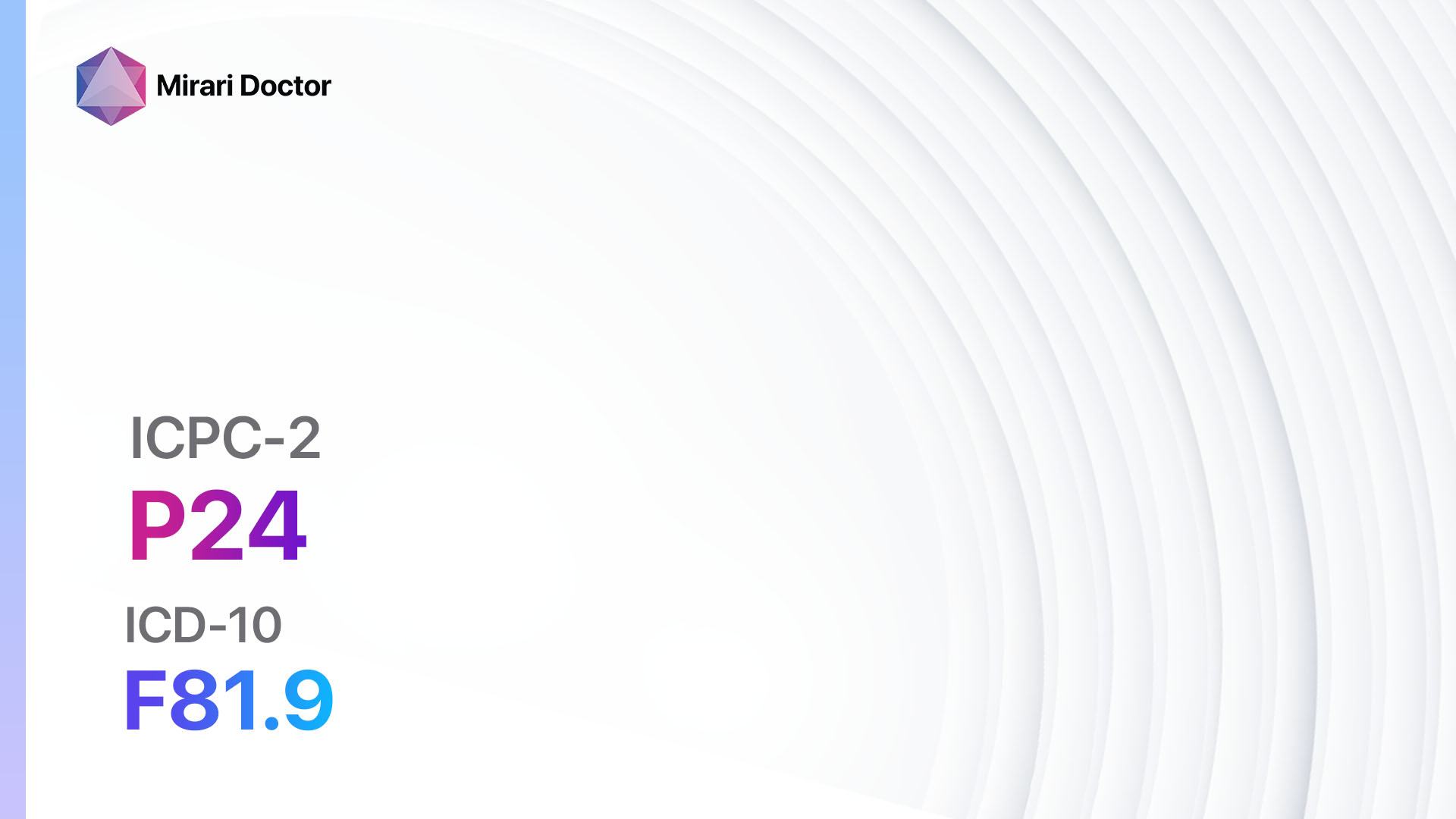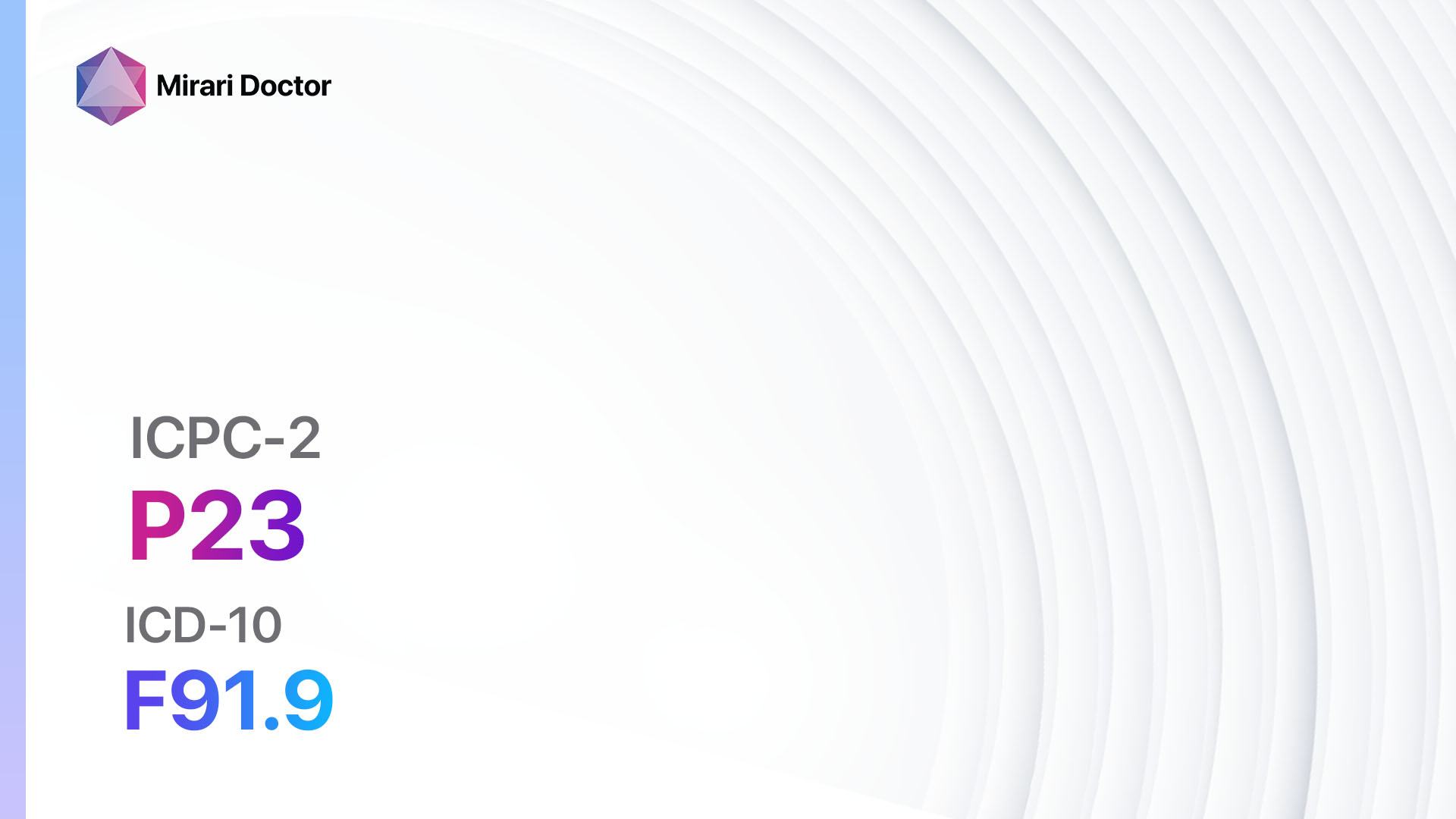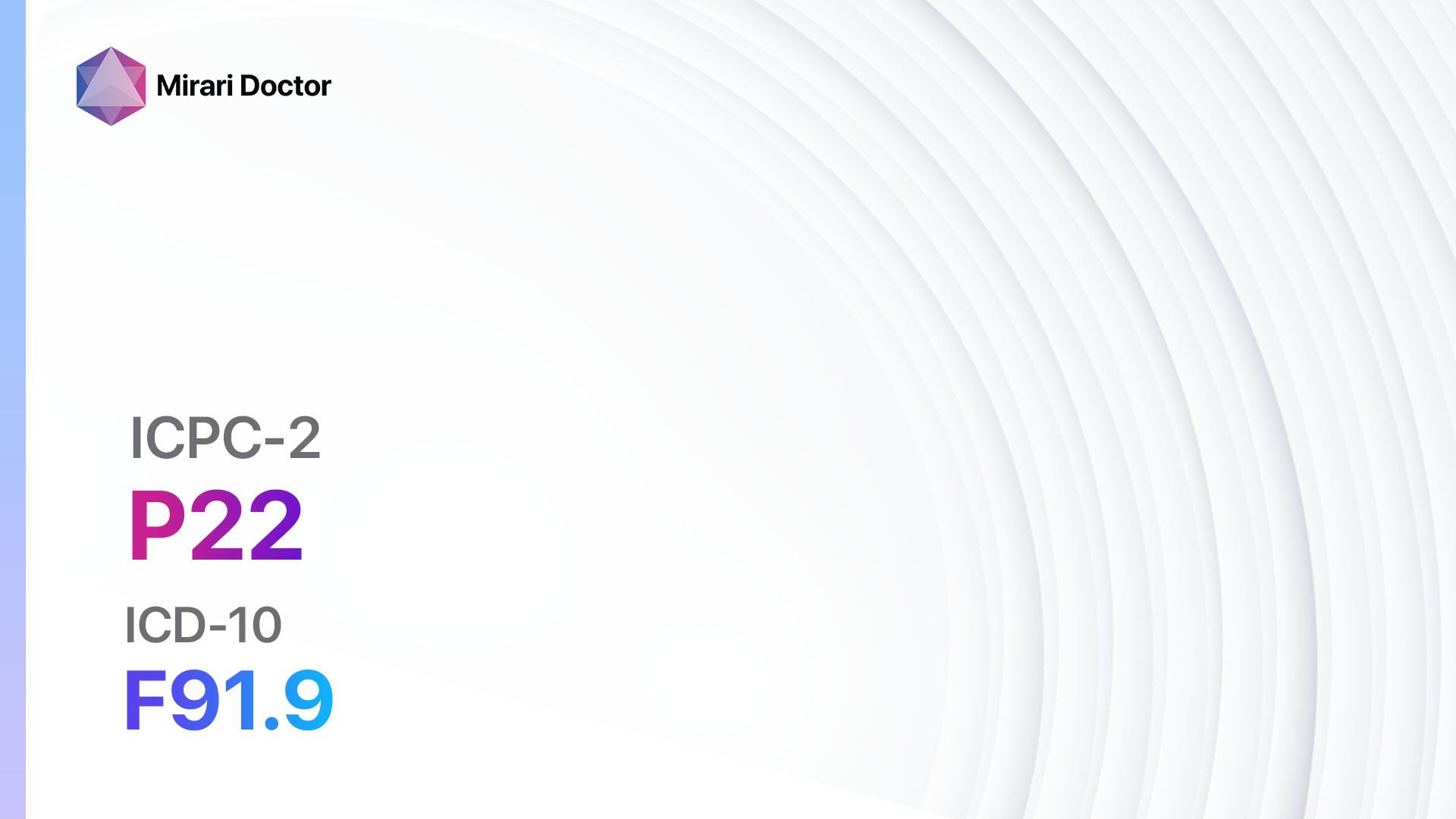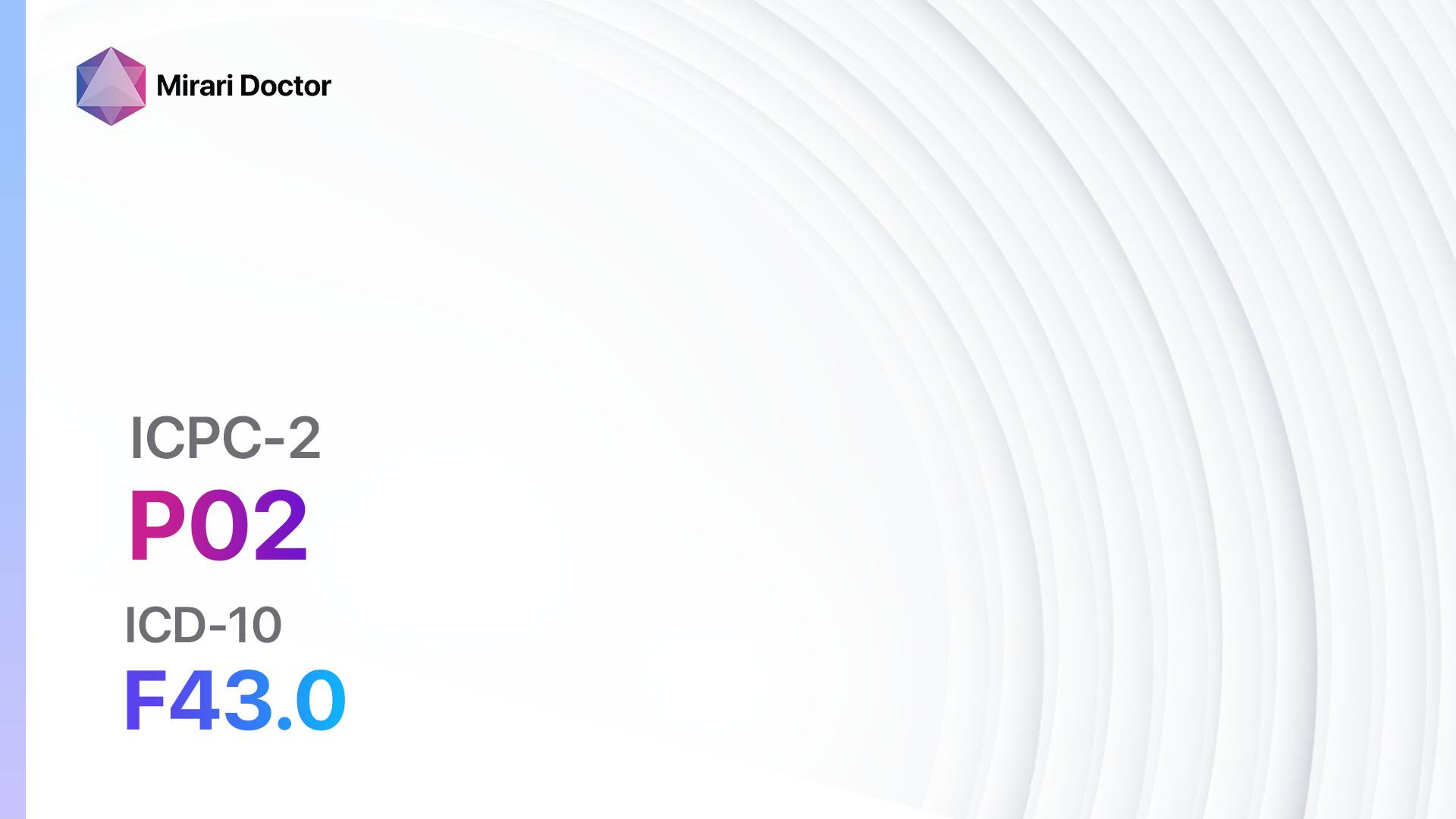
Introduction
Acute stress reaction, also known as acute stress disorder, is a psychological condition that occurs in response to a traumatic event. It is characterized by the development of anxiety, dissociation, and other symptoms that occur within one month of the traumatic event.[1] The aim of this guide is to provide healthcare professionals with a comprehensive overview of the symptoms, causes, diagnostic steps, possible interventions, and patient education for acute stress reaction.
Codes
Symptoms
- Re-experiencing the traumatic event through intrusive thoughts, nightmares, or flashbacks
- Avoidance of reminders or triggers associated with the traumatic event
- Negative changes in mood and cognition, such as persistent negative emotions, distorted thoughts, or difficulty remembering the traumatic event
- Increased arousal and reactivity, including irritability, hypervigilance, and exaggerated startle response[2]
Causes
- Exposure to a traumatic event, such as a natural disaster, serious accident, physical or sexual assault, or witnessing a violent or life-threatening event
- Personal vulnerability factors, such as a history of trauma, previous mental health conditions, or a lack of social support[3]
Diagnostic Steps
Medical History
- Gather information about the traumatic event, including the nature of the event, the individual’s proximity to the event, and the duration and intensity of exposure
- Assess for any pre-existing mental health conditions or history of trauma
- Evaluate the individual’s social support system and level of resilience[4]
Physical Examination
- Perform a general physical examination to rule out any physical causes of the symptoms
- Assess vital signs, including heart rate, blood pressure, and respiratory rate, as increased arousal may be present[5]
Laboratory Tests
- No specific laboratory tests are required for the diagnosis of acute stress reaction
- However, blood tests may be performed to rule out any underlying medical conditions that may be contributing to the symptoms[6]
Diagnostic Imaging
- Diagnostic imaging is not typically necessary for the diagnosis of acute stress reaction
- However, imaging studies may be ordered if there are concerns about physical injuries or other medical conditions[7]
Other Tests
- Psychological assessments, such as the Clinician-Administered PTSD Scale (CAPS) or the Impact of Event Scale (IES), may be used to assess the severity of symptoms and monitor treatment progress
- Screening for other mental health conditions, such as depression or anxiety disorders, may be warranted[8]
Follow-up and Patient Education
- Schedule regular follow-up appointments to monitor the individual’s progress and adjust treatment as needed
- Provide education about the nature of acute stress reaction, including the expected course of symptoms and the importance of self-care and coping strategies
- Offer information about support groups or counseling services that may be beneficial for the individual[9][10]
Possible Interventions
Traditional Interventions
Medications:
Top 5 drugs for Acute stress reaction:
- Selective Serotonin Reuptake Inhibitors (SSRIs) (e.g., Sertraline, Escitalopram):
- Cost : Generic versions can be $10-$50/month.
- Contraindications : Hypersensitivity to SSRIs, concurrent use of monoamine oxidase inhibitors (MAOIs).
- Side effects : Nausea, headache, insomnia.
- Severe side effects : Serotonin syndrome, suicidal thoughts.
- Drug interactions: MAOIs, other serotonergic drugs.
- Warning : Close monitoring for worsening symptoms or suicidal ideation.
- Benzodiazepines (e.g., Lorazepam, Alprazolam):
- Cost : Generic versions can be $4-$20/month.
- Contraindications : History of substance abuse, respiratory insufficiency.
- Side effects : Sedation, dizziness, confusion.
- Severe side effects : Respiratory depression, dependence.
- Drug interactions: Alcohol, opioids.
- Warning : Short-term use recommended due to risk of dependence.
- Beta-blockers (e.g., Propranolol):
- Cost : Generic versions can be $4-$20/month.
- Contraindications : Severe bradycardia, heart failure.
- Side effects : Fatigue, dizziness, bradycardia.
- Severe side effects : Bronchospasm, heart block.
- Drug interactions: Calcium channel blockers, insulin.
- Warning : Should not be abruptly stopped.
- Antidepressants (e.g., Amitriptyline, Nortriptyline):
- Cost : Generic versions can be $4-$20/month.
- Contraindications : Hypersensitivity to tricyclic antidepressants, recent myocardial infarction.
- Side effects : Dry mouth, constipation, sedation.
- Severe side effects : Cardiac arrhythmias, seizures.
- Drug interactions: MAOIs, other serotonergic drugs.
- Warning : Close monitoring for worsening symptoms or suicidal ideation.
- Antipsychotics (e.g., Quetiapine, Risperidone):
- Cost : Generic versions can be $10-$50/month.
- Contraindications : Hypersensitivity to antipsychotics, dementia-related psychosis.
- Side effects : Sedation, weight gain, extrapyramidal symptoms.
- Severe side effects : Neuroleptic malignant syndrome, tardive dyskinesia.
- Drug interactions: Other antipsychotics, medications that prolong QT interval.
- Warning : Increased risk of mortality in elderly patients with dementia-related psychosis.
Alternative Drugs :
- Prazosin : Alpha-1 adrenergic blocker used for nightmares and sleep disturbances associated with acute stress reaction.
- Hydroxyzine : Antihistamine with anxiolytic properties, used for short-term relief of anxiety symptoms.
- Gabapentin : Anticonvulsant medication that may help with anxiety and sleep disturbances.
- Buspirone : Non-benzodiazepine anxiolytic medication that may be used for long-term management of anxiety symptoms.
- Mirtazapine : Antidepressant with sedating properties, used for sleep disturbances and appetite stimulation.
Psychological Interventions:
- Cognitive-behavioral therapy (CBT): A structured therapy that helps individuals identify and change negative thought patterns and behaviors associated with the traumatic event. Cost: $100-$200 per session.
- Eye movement desensitization and reprocessing (EMDR): A therapy that uses bilateral stimulation to help individuals process traumatic memories and reduce distress. Cost: $100-$200 per session.
- Group therapy: Provides a supportive environment for individuals to share their experiences and learn coping strategies from others. Cost: Varies depending on the specific group and facilitator.
- Mindfulness-based stress reduction (MBSR): Teaches individuals to focus on the present moment and develop non-judgmental awareness of their thoughts and emotions. Cost: $100-$200 per session.
- Pharmacotherapy combined with therapy: A combination of medication and therapy may be more effective in reducing symptoms and improving overall functioning.
Alternative Interventions
- Acupuncture: May help reduce anxiety and promote relaxation. Cost: $60-$120 per session.
- Yoga and meditation: Can help individuals manage stress and improve overall well-being. Cost: Varies depending on the specific class or instructor.
- Massage therapy: May help reduce muscle tension and promote relaxation. Cost: $60-$120 per session.
- Art therapy: Provides a creative outlet for individuals to express their emotions and process traumatic experiences. Cost: Varies depending on the specific art therapist and materials used.
- Animal-assisted therapy: Involves interactions with trained animals to promote emotional healing and reduce stress. Cost: Varies depending on the specific therapy program.
Lifestyle Interventions
- Regular exercise: Physical activity can help reduce stress and improve mood. Cost: Varies depending on the specific activity or gym membership.
- Healthy diet: Eating a balanced diet rich in fruits, vegetables, and whole grains can support overall well-being. Cost: Varies depending on individual food choices.
- Sufficient sleep: Getting an adequate amount of sleep can help restore energy and improve mental health. Cost: Varies depending on individual sleep habits and any necessary interventions for sleep disturbances.
- Stress management techniques: Learning and practicing stress management techniques, such as deep breathing exercises or progressive muscle relaxation, can help individuals cope with stress. Cost: Varies depending on the specific technique and any necessary training or guidance.
- Social support: Engaging in activities and maintaining connections with supportive friends and family members can provide emotional support and reduce feelings of isolation. Cost: Varies depending on individual preferences and activities.
It is important to note that the cost ranges provided are approximate and may vary depending on the location and availability of the interventions.
Mirari Cold Plasma Alternative Intervention
Understanding Mirari Cold Plasma
- Safe and Non-Invasive Treatment: Mirari Cold Plasma is a safe and non-invasive treatment option for various skin conditions. It does not require incisions, minimizing the risk of scarring, bleeding, or tissue damage.
- Efficient Extraction of Foreign Bodies: Mirari Cold Plasma facilitates the removal of foreign bodies from the skin by degrading and dissociating organic matter, allowing easier access and extraction.
- Pain Reduction and Comfort: Mirari Cold Plasma has a local analgesic effect, providing pain relief during the treatment, making it more comfortable for the patient.
- Reduced Risk of Infection: Mirari Cold Plasma has antimicrobial properties, effectively killing bacteria and reducing the risk of infection.
- Accelerated Healing and Minimal Scarring: Mirari Cold Plasma stimulates wound healing and tissue regeneration, reducing healing time and minimizing the formation of scars.
Mirari Cold Plasma Prescription
Video instructions for using Mirari Cold Plasma Device – P02 Acute stress reaction (ICD-10:F43.0)
| Mild | Moderate | Severe |
| Mode setting: 2 (Wound Healing) Location: 7 (Neuro system & ENT) Morning: 15 minutes, Evening: 15 minutes |
Mode setting: 2 (Wound Healing) Location: 7 (Neuro system & ENT) Morning: 30 minutes, Lunch: 30 minutes, Evening: 30 minutes |
Mode setting: 2 (Wound Healing) Location: 7 (Neuro system & ENT) Morning: 30 minutes, Lunch: 30 minutes, Evening: 30 minutes |
| Mode setting: 8 (Insomnia) Location: 7 (Neuro system & ENT) Morning: 15 minutes, Evening: 15 minutes |
Mode setting: 8 (Insomnia) Location: 7 (Neuro system & ENT) Morning: 30 minutes, Lunch: 30 minutes, Evening: 30 minutes |
Mode setting: 8 (Insomnia) Location: 7 (Neuro system & ENT) Morning: 30 minutes, Lunch: 30 minutes, Evening: 30 minutes |
| Mode setting: 7 (Immunotherapy) Location: 7 (Neuro system & ENT) Morning: 15 minutes, Evening: 15 minutes |
Mode setting: 7 (Immunotherapy) Location: 7 (Neuro system & ENT) Morning: 30 minutes, Lunch: 30 minutes, Evening: 30 minutes |
Mode setting: 7 (Immunotherapy) Location: 7 (Neuro system & ENT) Morning: 30 minutes, Lunch: 30 minutes, Evening: 30 minutes |
| Total Morning: 45 minutes approx. $7.50 USD, Evening: 45 minutes approx. $7.50 USD |
Total Morning: 90 minutes approx. $15 USD, Lunch: 90 minutes approx. $15 USD, Evening: 90 minutes approx. $15 USD |
Total Morning: 90 minutes approx. $15 USD, Lunch: 90 minutes approx. $15 USD, Evening: 90 minutes approx. $15 USD |
| Usual treatment for 7-60 days approx. $105 USD – $900 USD | Usual treatment for 6-8 weeks approx. $1,890 USD – $2,520 USD |
Usual treatment for 3-6 months approx. $4,050 USD – $8,100 USD
|
 |
|
Use the Mirari Cold Plasma device to treat Acute stress reaction effectively.
WARNING: MIRARI COLD PLASMA IS DESIGNED FOR THE HUMAN BODY WITHOUT ANY ARTIFICIAL OR THIRD PARTY PRODUCTS. USE OF OTHER PRODUCTS IN COMBINATION WITH MIRARI COLD PLASMA MAY CAUSE UNPREDICTABLE EFFECTS, HARM OR INJURY. PLEASE CONSULT A MEDICAL PROFESSIONAL BEFORE COMBINING ANY OTHER PRODUCTS WITH USE OF MIRARI.
Step 1: Cleanse the Skin
- Start by cleaning the affected area of the skin with a gentle cleanser or mild soap and water. Gently pat the area dry with a clean towel.
Step 2: Prepare the Mirari Cold Plasma device
- Ensure that the Mirari Cold Plasma device is fully charged or has fresh batteries as per the manufacturer’s instructions. Make sure the device is clean and in good working condition.
- Switch on the Mirari device using the power button or by following the specific instructions provided with the device.
- Some Mirari devices may have adjustable settings for intensity or treatment duration. Follow the manufacturer’s instructions to select the appropriate settings based on your needs and the recommended guidelines.
Step 3: Apply the Device
- Place the Mirari device in direct contact with the affected area of the skin. Gently glide or hold the device over the skin surface, ensuring even coverage of the area experiencing.
- Slowly move the Mirari device in a circular motion or follow a specific pattern as indicated in the user manual. This helps ensure thorough treatment coverage.
Step 4: Monitor and Assess:
- Keep track of your progress and evaluate the effectiveness of the Mirari device in managing your Acute stress reaction. If you have any concerns or notice any adverse reactions, consult with your health care professional.
Note
This guide is for informational purposes only and should not replace the advice of a medical professional. Always consult with your healthcare provider or a qualified medical professional for personal advice, diagnosis, or treatment. Do not solely rely on the information presented here for decisions about your health. Use of this information is at your own risk. The authors of this guide, nor any associated entities or platforms, are not responsible for any potential adverse effects or outcomes based on the content.
Mirari Cold Plasma System Disclaimer
- Purpose: The Mirari Cold Plasma System is a Class 2 medical device designed for use by trained healthcare professionals. It is registered for use in Thailand and Vietnam. It is not intended for use outside of these locations.
- Informational Use: The content and information provided with the device are for educational and informational purposes only. They are not a substitute for professional medical advice or care.
- Variable Outcomes: While the device is approved for specific uses, individual outcomes can differ. We do not assert or guarantee specific medical outcomes.
- Consultation: Prior to utilizing the device or making decisions based on its content, it is essential to consult with a Certified Mirari Tele-Therapist and your medical healthcare provider regarding specific protocols.
- Liability: By using this device, users are acknowledging and accepting all potential risks. Neither the manufacturer nor the distributor will be held accountable for any adverse reactions, injuries, or damages stemming from its use.
- Geographical Availability: This device has received approval for designated purposes by the Thai and Vietnam FDA. As of now, outside of Thailand and Vietnam, the Mirari Cold Plasma System is not available for purchase or use.
References
- American Psychiatric Association. (2013). Diagnostic and statistical manual of mental disorders (5th ed.). Arlington, VA: American Psychiatric Publishing.
- Bryant, R. A. (2017). Acute stress disorder. Current Opinion in Psychology, 14, 127-131.
- Kessler, R. C., Aguilar-Gaxiola, S., Alonso, J., Benjet, C., Bromet, E. J., Cardoso, G., … & Koenen, K. C. (2017). Trauma and PTSD in the WHO World Mental Health Surveys. European Journal of Psychotraumatology, 8(sup5), 1353383.
- Brewin, C. R., Andrews, B., & Valentine, J. D. (2000). Meta-analysis of risk factors for posttraumatic stress disorder in trauma-exposed adults. Journal of Consulting and Clinical Psychology, 68(5), 748-766.
- Pitman, R. K., Rasmusson, A. M., Koenen, K. C., Shin, L. M., Orr, S. P., Gilbertson, M. W., … & Liberzon, I. (2012). Biological studies of post-traumatic stress disorder. Nature Reviews Neuroscience, 13(11), 769-787.
- Yehuda, R., Hoge, C. W., McFarlane, A. C., Vermetten, E., Lanius, R. A., Nievergelt, C. M., … & Hyman, S. E. (2015). Post-traumatic stress disorder. Nature Reviews Disease Primers, 1(1), 1-22.
- Bremner, J. D. (2006). Traumatic stress: effects on the brain. Dialogues in Clinical Neuroscience, 8(4), 445-461.
- Weathers, F. W., Bovin, M. J., Lee, D. J., Sloan, D. M., Schnurr, P. P., Kaloupek, D. G., … & Marx, B. P. (2018). The Clinician-Administered PTSD Scale for DSM-5 (CAPS-5): Development and initial psychometric evaluation in military veterans. Psychological Assessment, 30(3), 383-395.
- National Institute for Health and Care Excellence. (2018). Post-traumatic stress disorder. NICE guideline [NG116].
- Forbes, D., Creamer, M., Bisson, J. I., Cohen, J. A., Crow, B. E., Foa, E. B., … & Ursano, R. J. (2010). A guide to guidelines for the treatment of PTSD and related conditions. Journal of Traumatic Stress, 23(5), 537-552.
Related articles
Made in USA


